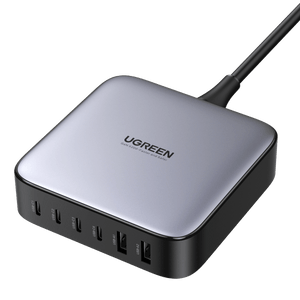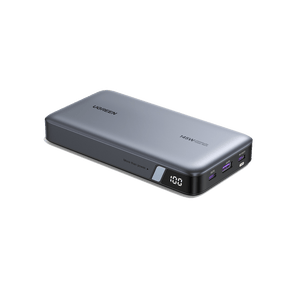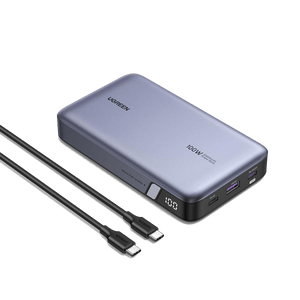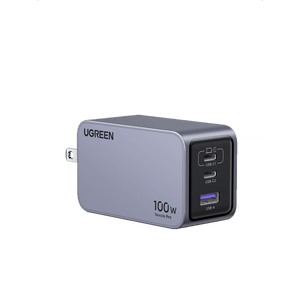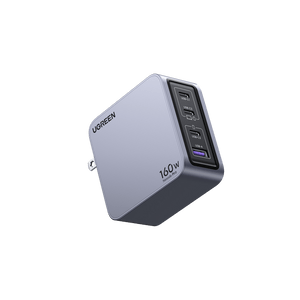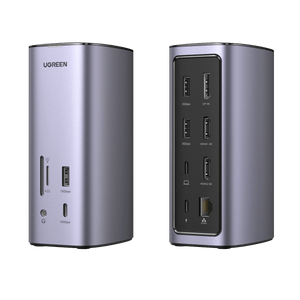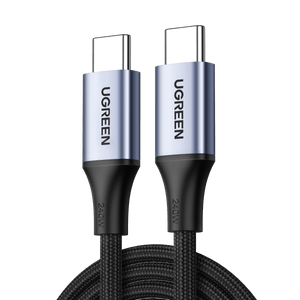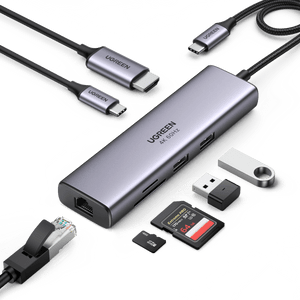How to Connect Laptop to Monitor: A Complete Quick Guide
More screen real estate in this fast-paced digital world might be the turning point between good productivity and a better, more enriched user experience. You are going to virtually connect your laptop with the external monitor in a few but easy steps, using next-level efficiency and easy access to seamless multi-tasking, plus a better viewing experience. Follow the post for instructions on how to connect a laptop to a monitor and useful tips.

Key Takeaways
- Connecting a laptop to an external monitor doubles screen space, boosting multitasking efficiency and productivity for tasks like coding, spreadsheets, or media viewing.
- Using high-quality cables (e.g., HDMI, DisplayPort) from brands like UGREEN ensures optimal audio-visual performance and minimizes signal loss or equipment damage.
- A docking station simplifies connecting multiple peripherals alongside a monitor, reducing cable clutter and enabling a seamless desktop-like setup.
- Proper monitor positioning at eye level and regular graphics driver updates enhance ergonomic comfort and ensure compatibility for a smooth display experience.
Why Use a Second Monitor with Your Laptop
Benefits acquired by connecting your laptop to an external display can raise productivity, comfort, and the computing experience to a great level.
Increased screen real estate: Hook it up with a monitor, and you've doubled your screen space. It allows you to open many windows side by side and do multitasking much easier and more efficiently.
Work Productively: Bigger screens mean that you can work more comfortably and productively. You can see more on a screen, so there is less time with all the windows changing or scrolling. Especially useful for spreadsheets, coding, and more involved software.
Screen real estate: Often, an external monitor offers a bigger, higher-resolution screen than your laptop's built-in display. Such an enlarged screen is going to improve your viewing in movies, gameplay, or web browsing; thus, more engaging and interesting images and graphics are in store.
More ergonomically friendly: Extended laptop usage causes eyestrain, neck strain, and back strain, as the location of the screen is fixed. One can adjust the screen to a more comfortable height and distance when the laptop is docked to a monitor, hence promoting better posture and reducing physical discomfort.
Easy collaboration: Share your screen easily when working with others. Just plug in your laptop into an extended display and let the other parties fully see the content instead of huddling around your small laptop screen.
Versatility: Connecting your laptop to a monitor allows you to create a versatile workstation that combines the portability of a laptop with the comfort and productivity of a desktop setup. You can easily disconnect your laptop when you need to work on the go and reconnect it to the monitor when you're back at your desk.

How to Connect Laptop to Monitor?
It is easy to connect one's laptop to an external monitor; just a few simple steps and it should see the process through. Please note the following steps by steps guide to be able to connect your monitor to your laptop:
Check the ports of your computer and monitor. Look for them in both devices: HDMI, DisplayPort, VGA, or USB-C.
Get a cable that will match the ports of your laptop and monitor. To get the best quality picture and sound, go for the HDMI and DisplayPort cables. Make sure that your cable is long enough to reach both easily.
Plug one end of the cable to your laptop's video output port. This port generally is located on the side or back of your laptop. Push the cable to the port in firmly.
Attach the other end to the input port on your monitor; it is normally at the back. Make sure to attach the cable in firmly.
Power on your laptop and monitor if they are not already turned on. Your laptop should automatically detect the external monitor.
In such instances, if the laptop does not automatically detect the monitor, it would have to be manually enabled. Examine the display settings in the laptop, and you will have an option for detect/enable the external display.
Once your laptop is detected by the monitor, you should be able to manipulate your display settings. You can either extend your screen, where you use the monitor for extended view, or duplicate monitor displays.

Tips to Hook Up a Laptop to a Monitor
Following are a few good practices one can adhere to when connecting his laptop with an external monitor.
Compatibility Check: Check before purchasing any cables or accessories that they would work with your laptop and monitor and vice versa. Check all available ports in the devices for compatibility: HDMI, DisplayPort, VGA, USB-C.
Use good quality cables: Get some of the best quality cables from brands like UGREEN. Good quality of cables guarantees quality in the picture and audio, substantially reducing signal loss and guaranteeing a better connection. Do not use cheap or broken cables; they can offer a poor performance and even spoil your equipment.

Docking station: For anyone who would feel the need to connect their peripherals—keyboard, mouse, or even external storage devices—in bulk to their laptop, a docking station will be of prime use. UGREEN's docking stations enable you to connect your laptop with only one cable to a monitor and other peripherals. It helps to clean the mess of cables and makes setting up and removing the workspace easy.
Extended Display: Once you've connected the monitor to your laptop, according to your needs, set the display settings you need. You can choose to extend your screen, in which the monitor will be an extended display, or mirror the screen, which shows the same content on both the monitors. Set the resolution, scaling, and orientation settings accordingly to get the best experience.
Position your monitor properly: Place the monitor so your eyes and neck are under less stress. The top of the monitor should be at or slightly below eye level, and keep the monitor about an arm's length away. Use the monitor tilt and swivel controls to reduce reflections and glare.

Check for Updates: Ensure it is updated to the latest version of the drivers from the graphics vendor. Latest updates will ensure compatibility and maximum performance. Check the website of the laptop manufacturer or the graphics card vendor for new versions periodically.
Organize your cables: The cables can be organized with the use of either cable ties, clips, or the cable management system, which will make the cables well arranged and neat. It will not only make your space aesthetic but also prevent the cables from getting entangled or breaking apart.
Conclusion
With the information on how to connect a laptop to a monitor now at your possession, this is an easy but necessary skill in improving your experience in computing. Scroll down this article, as it provides you with a step-by-step setup guide and quick setup of your laptop and monitor with the provided tips. Be sure to pick good quality cables and docking stations so that you get the most out of them.
FAQ about external monitor connection
Q: Why won’t my laptop connect to an external monitor?
Ensure the cable linking your device to your external monitor is firmly connected. Test a different cable—if it works, the original was likely defective. Verify that the external monitor’s input source matches the connector or cable you’re using for seamless display performance.
Q: Can I connect my laptop directly to my monitor?
Yes, you can use HDMI cable to connect the monitor to your laptop, and USB-C lets you connect to HDMI if your laptop supports it (check with your manufacturer to find out).
Q: Why isn’t my laptop displaying on my monitor?
Confirm the cable between your PC and external monitor is securely attached. Swap it with a new cable—if it works, the old one was faulty. Test the external monitor on another system to pinpoint whether the issue lies with the monitor or your PC setup.







